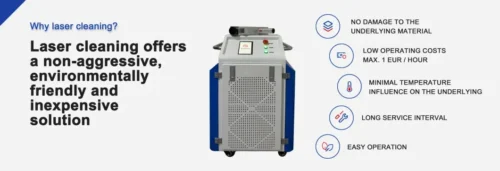Industrial laser cleaning is a modern surface preparation technique widely popular worldwide. It is a non-contact and non-destructive method of removing contaminants from the object’s surface. The process uses nano-second-length laser pulses toward the material’s surface. The interaction of laser light suddenly increases the temperature in that particular place. As a result, the contaminants either become gas or leave the material’s surface. You can benefit from a laser rust removal machine with the proper laser settings and equipment.
Laser cleaning provides the most precise results without damaging the material. It is practical and environmentally friendly. Besides, this surface preparation technique is also a cost-effective solution. It doesn’t require the use of additional chemicals or abrasive materials. As a result, most industries use this surface preparation technique. In addition, laser cleaning replaced traditional cleaning methods in modern surface preparation applications.
Keeping that importance in mind, we have prepared this article. We will find out why the laser cleaning method is the future of surface preparation. We will justify the reasons and compare them with the other traditional cleaning methods.

What is surface preparation?
Surface preparation refers to various cleaning methods used to treat the surface of a material. Typically, this surface preparation is famous for coating applications. Surface preparation is necessary for those materials which require repainting, coating, or lining. It ensures the material is ready to receive any layers or prepare for other surface-related applications. Why is surface preparation necessary? Because an oily or dirty surface may lead to ineffective coatings. However, there are several types of surface preparation techniques.
- Cleaning: Laser cleaning, chemical cleaning, or pressure washing are the standard cleaning methods. Laser cleaning, in this case, is the most popular and cost-effective solution.
- Sanding: This process uses abrasive materials to smooth rough or uneven surfaces. This type of surface preparation is famous in metal industries.
- Blasting: Sandblasting, dry ice blasting, grit blasting, soda blasting, etc., are famous.
- Stripping: This process uses chemical paint strippers or abrasives to remove old paint or coatings from the surface of a material.
- Degreasing: This process utilizes chemical solvents or degreasers to remove oil or grease from a surface.
The methods mentioned above are the most common in surface preparations. However, it is prevalent in aerospace, marine, automotive, manufacturing, etc.
Why is the laser cleaning method the future of surface preparation?
Laser cleaning is a relatively new method of surface preparation. It has recently gained popularity due to its many advantages over other surface preparation methods. However, these advantages include safety, high precision, environmental friendliness, cost-effectiveness, versatility, and efficiency. As a result, laser cleaning has become a promising technology in many industries. Therefore, the laser cleaning method is the future of surface preparation.
Safe, fast, and reliable
Laser cleaning is a non-contact process that is safe to operate on various materials. These materials include metal, glass, ceramics, and plastics. Besides, laser cleaning is an environmentally friendly method. It does not use any abrasives or chemical that produces waste or dust. As a result, the laser cleaning method became a sustainable option for surface preparation.
Laser cleaning is the fastest surface preparation method. This laser rust removal machine can quickly and precisely clean the surface of contaminants using the laser beam. Besides, it not only saves time but also reduces manual labor and the use of other substances. However, one of the key benefits of laser cleaning is its reliability. The laser surface cleaner can precisely focus the laser beam on a specific area. As a result, it doesn’t affect the surrounding areas. This high-precision ability makes it easy to clean intricate parts.
Efficient cleaning Process

One of the key advantages of laser cleaning is its efficiency. Laser surface cleaner cleans the surface of the material quickly and effectively. As previously mentioned that laser cleaning doesn’t affect the surrounding areas. As a result, it eliminates the risk of damage to the surface. In addition, it allows for cleaning hard-to-reach surfaces.
Precision Cleaning at the budgeted option
Laser cleaning is famous as the most accurate cleaning method. It is because of its ability to achieve high levels of accuracy and control in the cleaning process. Some of the technical parameters contribute to the precision cleaning process. These parameters are laser wavelength, pulse duration, energy, beam spot size, and repetition rate.
Since laser cleaning doesn’t affect the surrounding areas of the focused spot, it eliminates the risk of damage on the surface. In addition, it also reduces the use of additional chemicals or abrasives and the need for manual labor. Considering all these together, we can see that laser cleaning offers a cost-effective solution.
Requires no additional cleaning
After laser cleaning, it doesn’t require additional finishing. It is because of its high precision and practical cleaning ability. However, some specific reasons why laser cleaning doesn’t require extra cleaning are followed.
- Surface finish: Laser cleaning typically leaves a smooth and consistent surface finish. It eliminates the need for extra polishing or buffing. Traditional cleaning methods may require such additional finishing for better results.
- No residue: Laser cleaning typically vaporizes or ablates the contaminants. As a result, it doesn’t leave any residue on the surface after cleaning. Therefore, removing the residues doesn’t require any additional cleaning method.
- Surface activation: Laser cleaning on some materials can activate the surface properties. These properties include adhesion, corrosion resistance, and other properties.
Versatility
One of the prominent advantages of laser cleaning is its versatility. It is popular in many applications because it cleans various surface types. Laser cleaning suits most materials, such as metal, glass, ceramics, and plastics. On the other hand, this surface preparation method cleans most contaminants. These contaminants may include rust, paint, coating, dirt, or organic substances.
In addition, this surface preparation technique is famous for cleaning and restoring unique items. These items include artwork, sculptures, and historical monuments.
Comparison between other surface preparation processes
Laser cleaning is an effective surface preparation method compared to other cleaning methods. It is a non-contact process that can clean surfaces faster and more effectively than other cleaning methods. We have prepared some quick comparisons between laser cleaning and other cleaning methods.
Sand Blasting vs. laser cleaning
Both of these cleaning methods are popular in industrial applications. However, sandblasting is a contact process, and laser cleaning is a non-contact process. On the other hand, sandblasting require abrasive materials to clean where laser cleaning doesn’t need. Therefore, sandblasting produces dust which is comparatively harmful to the environment. On the other hand, laser cleaning makes no dust which may affect the environment.
Laser cleaning is ahead of sandblasting in comparing the quality of the finished product. In this case, laser cleaning provides more accurate and precise results.
Dry ice blasting vs. laser cleaning
Both of these surface preparation techniques are effective cleaning methods. Still, they have some differences. However, dry ice blasting is a non-abrasive cleaning method that uses dry ice pellets to remove surface contaminants. In this case, we can say that dry ice is a contact process. It may sometimes damage the surface of the material.
On the other hand, laser cleaning is a non-abrasive and non-contact process. Both methods have their unique advantages. The appropriate cleaning method depends on the type of surface, contaminants, and requirements.
Chemical cleaning vs. laser cleaning
Both of these surface preparation methods are popular. But compared with laser cleaning, chemical cleaning can’t afford unique requirements. In this case, chemical cleaning uses a harsh chemical to clean the contaminants. This chemical might be a threat to nature. On the other hand, chemical cleaning is the slowest surface preparation technique. Additionally, chemical cleaning methods can be messy and may not be as precise as laser cleaning. Therefore, chemical cleaning can’t win against laser cleaning technology in case of productivity.
Mechanical cleaning vs. laser cleaning
Mechanical cleaning utilizes physical tools such as brushes, sanders, or scrapers. It is a traditional cleaning method but not as effective as laser cleaning. However, these physical tools may damage the surface of the materials. In addition, it may require more labor costs than laser cleaning. However, laser cleaning is a more advanced cleaning technology that is more precise, effective, and versatile.
Ultrasonic cleaning vs. laser cleaning
This cleaning method uses high-frequency sound waves to create cavitation bubbles in a cleaning method. However, these bubbles explode and create microscopic shockwaves. These shockwaves remove dust, rust, oil, or grease. But, there’s a limitation of ultrasonic cleaning. It can is ideal for cleaning small and intricate parts.
On the other hand, laser cleaning is famous for its versatility. All types of surfaces and materials are suitable for the laser cleaning method.
Summary
Industrial laser cleaning is a type of surface preparation method widely popular in most industries. However, it is a non-contact and non-abrasive process. It cleans the material surface quickly and efficiently. It doesn’t leave any residue on top of the material’s surface. As a result, laser cleaning doesn’t require additional finishing steps. On the other hand, laser cleaning eliminates labor and abrasive materials. Therefore, laser cleaning provides the best-budgeted option for every industry.
Considering all the benefits and comparisons discussed above, we can see that laser cleaning is the best solution. And indeed, it is the future of surface preparation.
